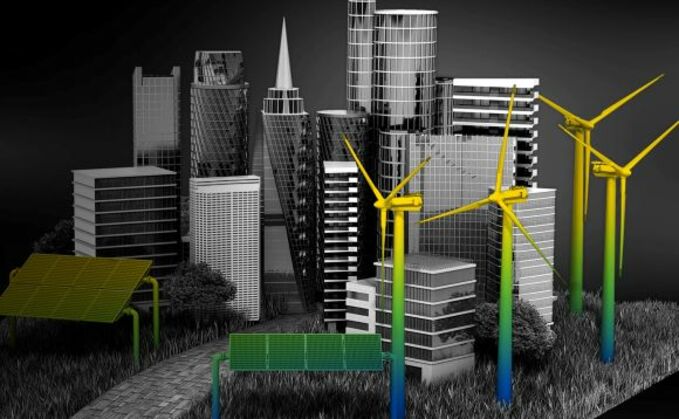
Global institutional investors have dramatically raised their ambition to achieve net zero in their real asset portfolios over the last 12 months. Our poll of more than 1,100 global institutional investors shows that 51 per cent of pension funds and insurance companies are now planning to achieve net zero in their portfolios by 2050 - up 12 percentage points on last year's study.
These investors represent over €2 trillion of assets under management and span 56 countries across Europe, North America and Asia, so they have a major influence.
At the same time, they are increasingly aware of the stark challenges they will face in becoming net zero across infrastructure, real estate and private debt investments.
Environmental pressures are described as ‘discouraging' by more than 80 per cent of the institutions polled, which will give governments around the world pause for thought as they pursue the twin goals of net zero and ‘building back better'.
On the one hand, investment in infrastructure is seen as key in driving job creation; at the same time, investment in new infrastructure is seen as the asset class likely to pose the biggest obstacle to institutions achieving net zero.
Even with retro-fit increasingly in vogue, investors see sustainability challenges in real estate, with the higher costs of improving properties' environmental credentials currently adding to steep materials and labour costs on new developments.
The good news is that in the space of a year, global institutional investors have rapidly raised their game in the way they tackle sustainability issues. Warnings that there is no time to waste in minimising the effects of the climate emergency have concentrated minds beyond alignment to global agreements and more direct action.
Clever financing solutions have jumped to the fore ahead of measures like carbon offsetting as investors begin to deliver real world answers to major challenges.
So, just how have real assets fared during the past year in the face of the twin threats of COVID-19, and the knock-on impact on economic activity, and the climate emergency?
Real estate has held up far better during the COVID-19 pandemic than after the global financial crisis, with overall values falling by seven per cent compared with 44 per cent between October 2008 and March 2009.
While all real estate values broadly fell at the same rate in 2008-2009, there have been some strong performers during the pandemic, mitigating some of the steeper losses. And although global real estate adviser CBRE is forecasting a 5.3 per cent decline in UK office rents in 2021 and a 9.5 per cent fall on retail rents this year, it reckons warehousing will boom with 59 million square feet of new space needed by 2025. It also forecasts that house prices will rise by 5.9 per cent this year(1).
Infrastructure also has its strong points, with investment in digital proving robust even as transport-related assets have taken a once-in-a-generation hit.
Aviva Investors' Real Assets House View 2021(2) explained that greenfield infrastructure benefits from an attractive risk premium, which digital infrastructure and rural broadband are particularly well positioned to capture.
This is due to growing demand for data and opportunities in the sector, with the added bonus of supporting economic activities in rural locations. There are risks, however, with the selection of the right technology and operating partners for greenfield infrastructure considered crucial.
Overall, investment in real assets has continued to rise around the world despite the pandemic. Almost half of global institutional investors expect to increase investment in real assets over the next 12 months. Robust income streams and reinvention triggered by COVID-19 in infrastructure and real estate are among the drivers for this growing interest.
Our previous two studies in 2019 and 2020 showed the sector coming of age, with global institutional investors recognising the attractiveness of its long-term, stable cashflows and an illiquidity premium over more traditional, liquid assets.
The last 18 months spanning the COVID-19 pandemic have shown real assets are valued just as much for their defensive qualities, consistent performance and relative lack of volatility compared to equities and traditional fixed income investments.
References
(1) https://www.cbre.co.uk/research-and-reports/UK-Market-Outlook-Midyear-Review-2021
(2) https://www.avivainvestors.com/en-gb/about/ company-news/2021/02/aviva-investors-real-assets-house-view-2021
This post was funded by Aviva Investors









